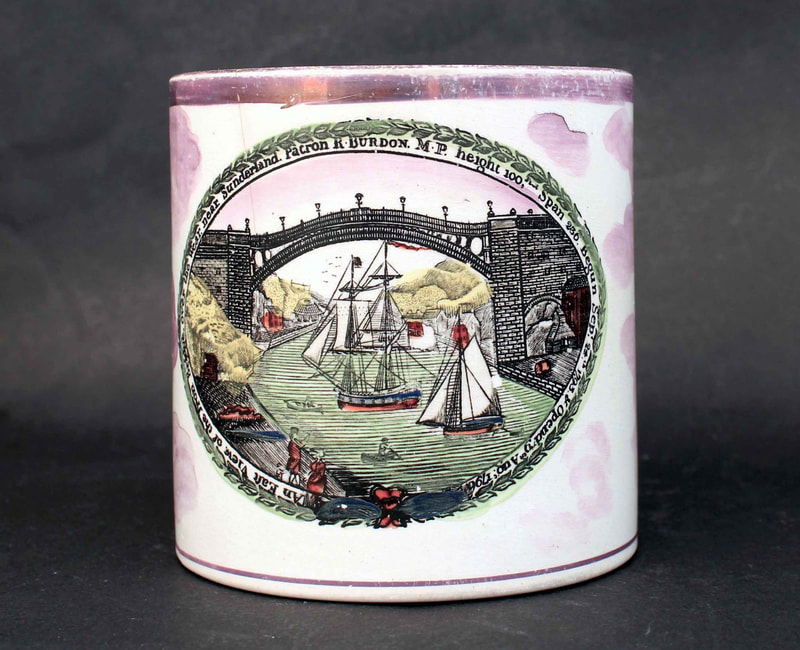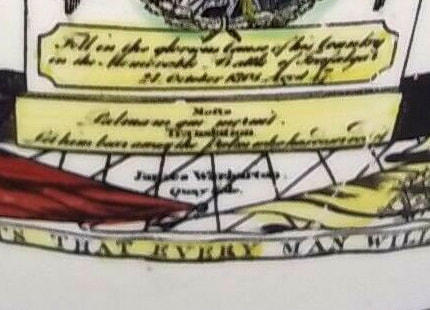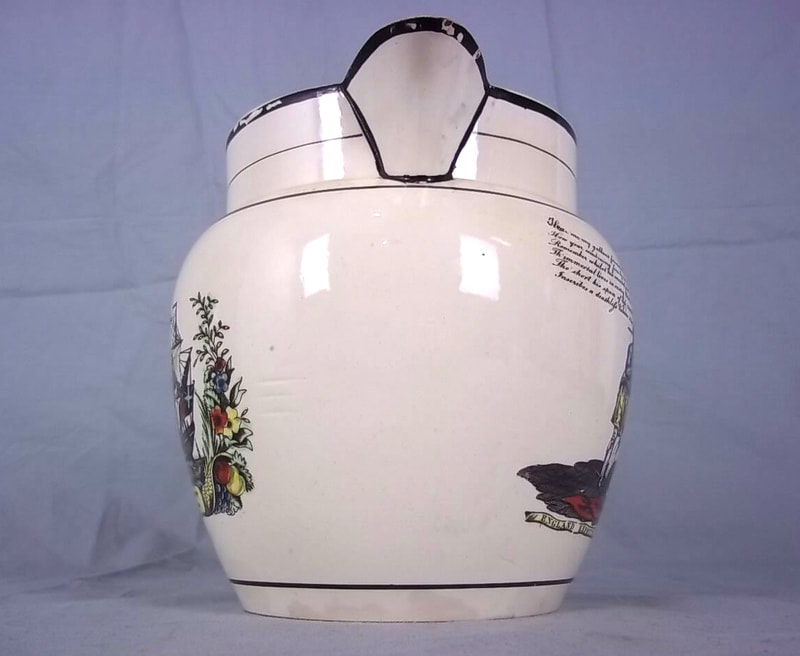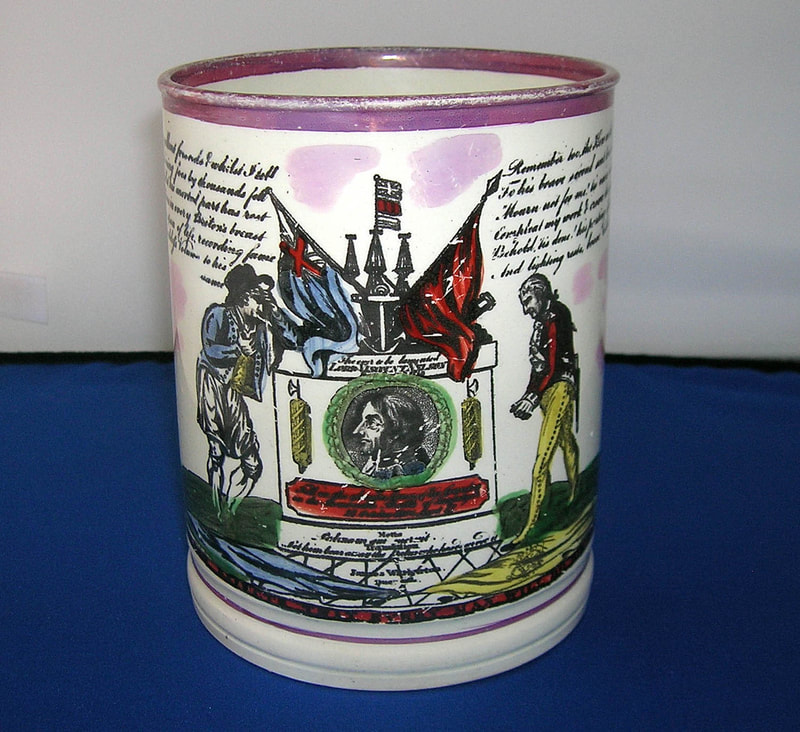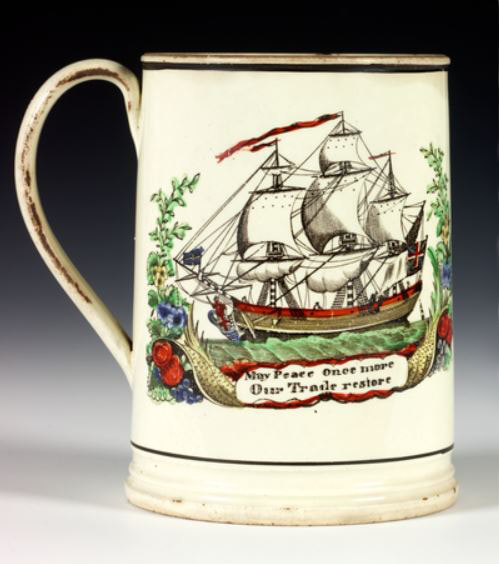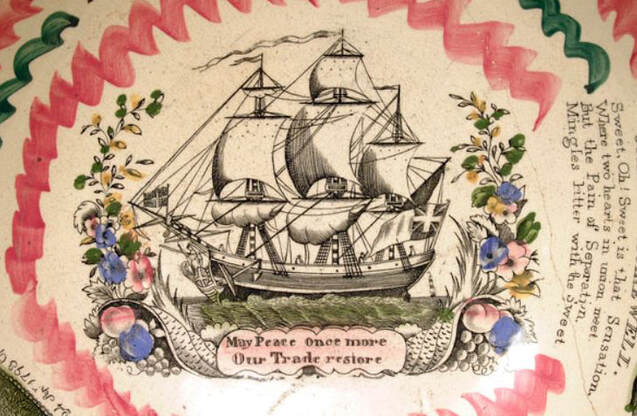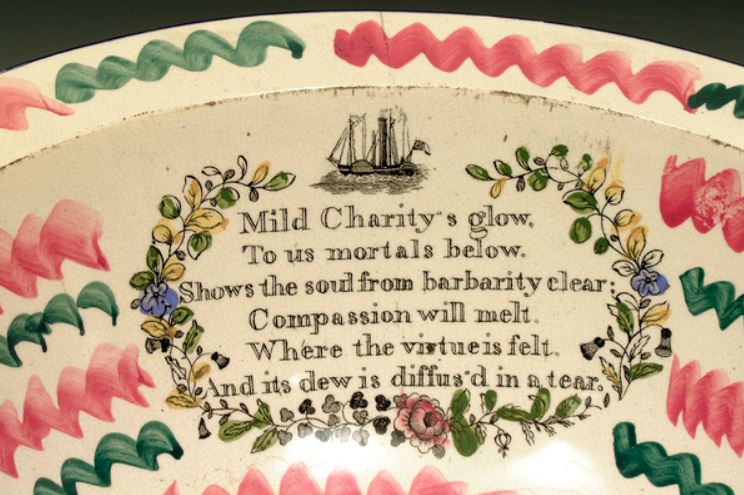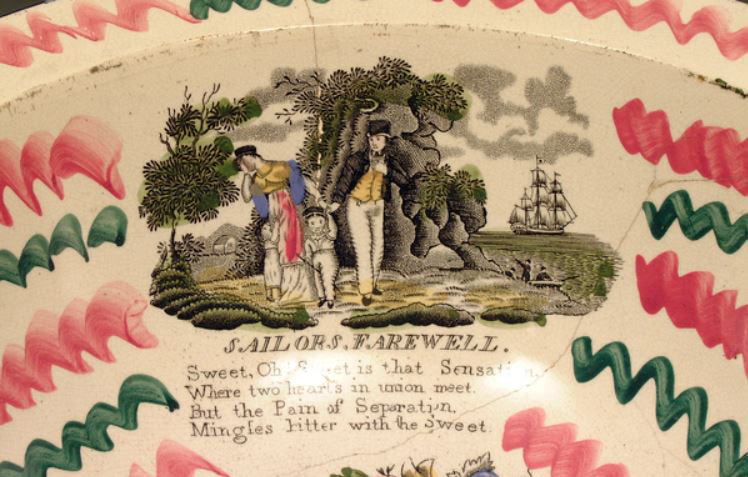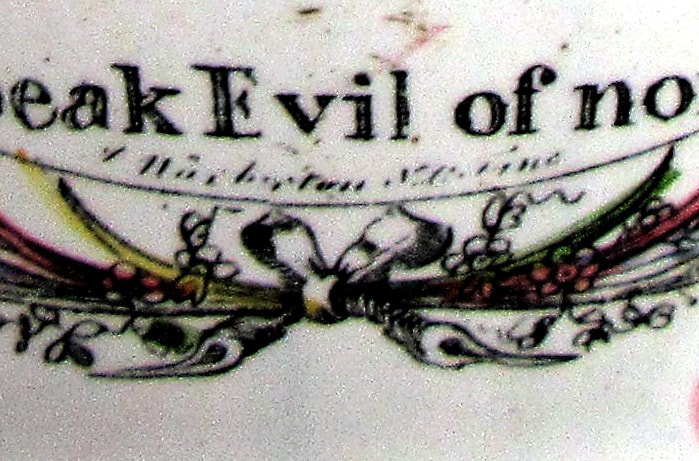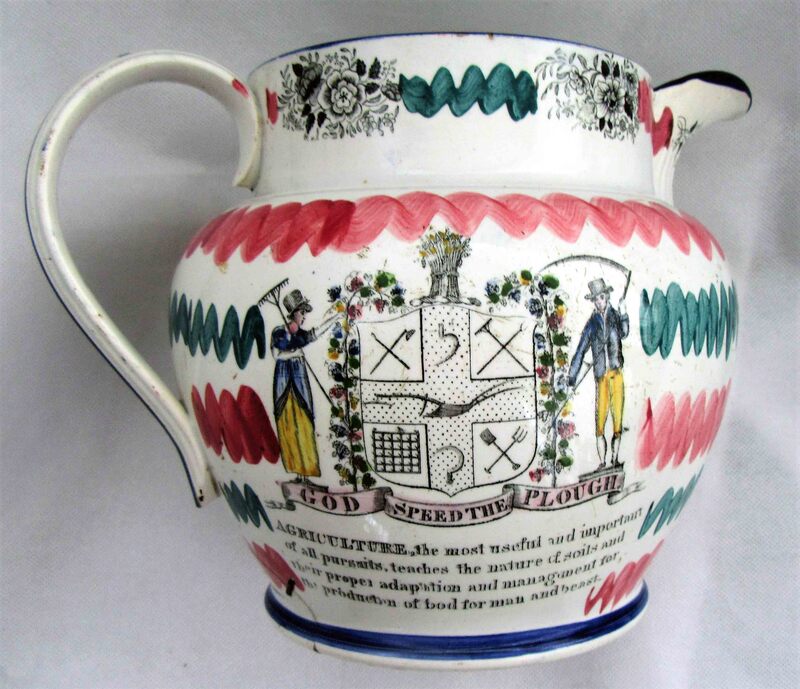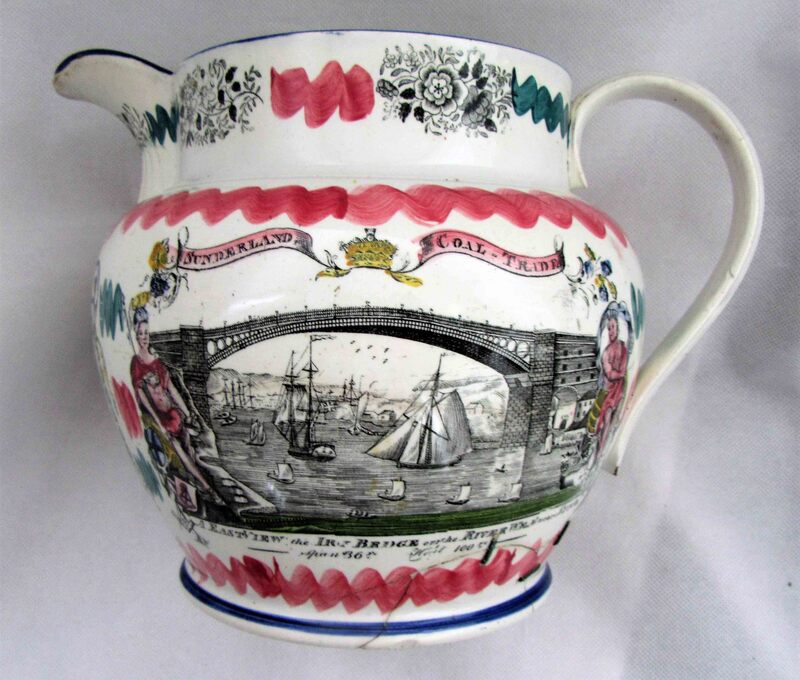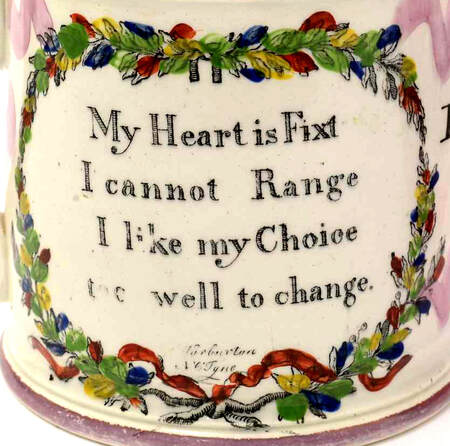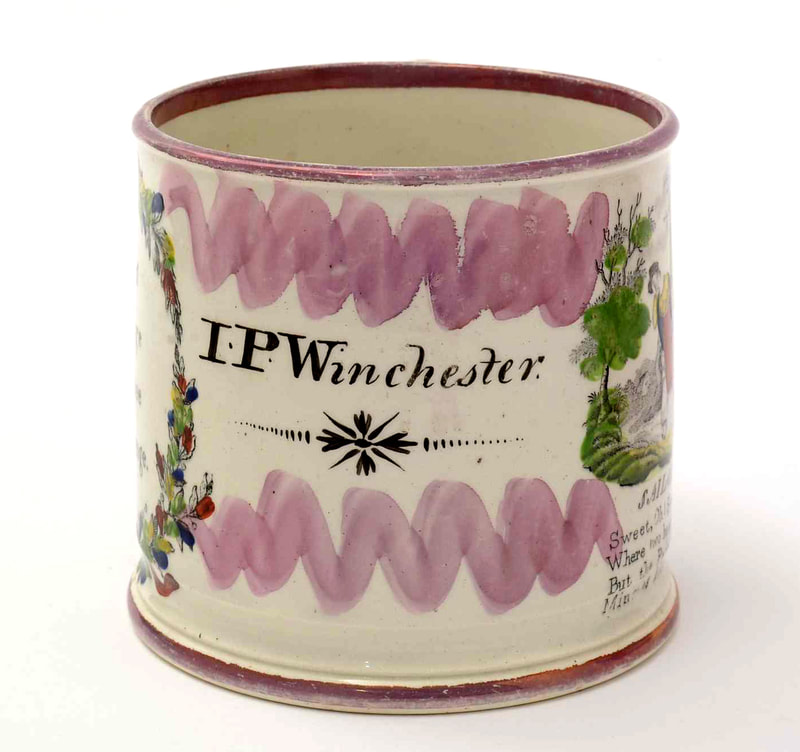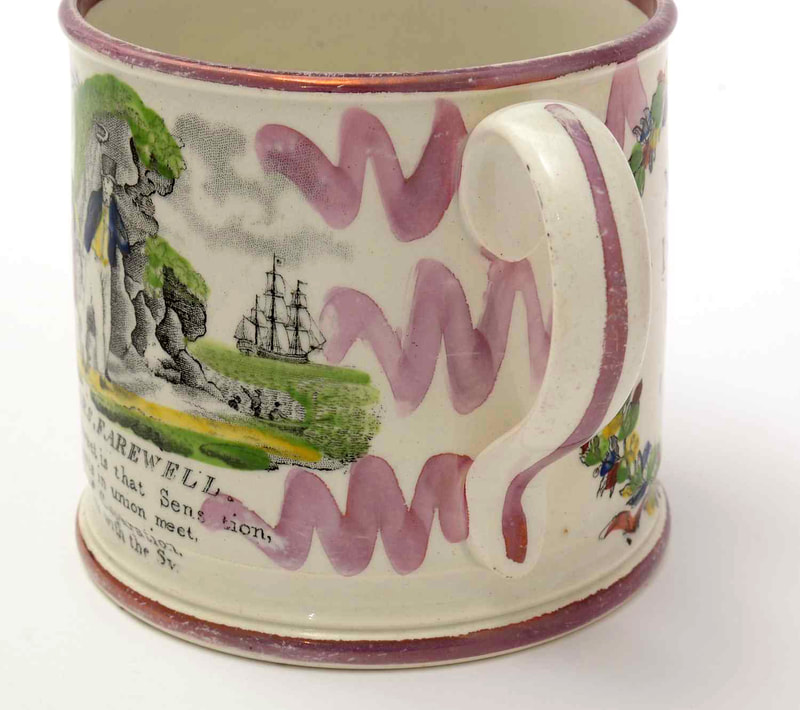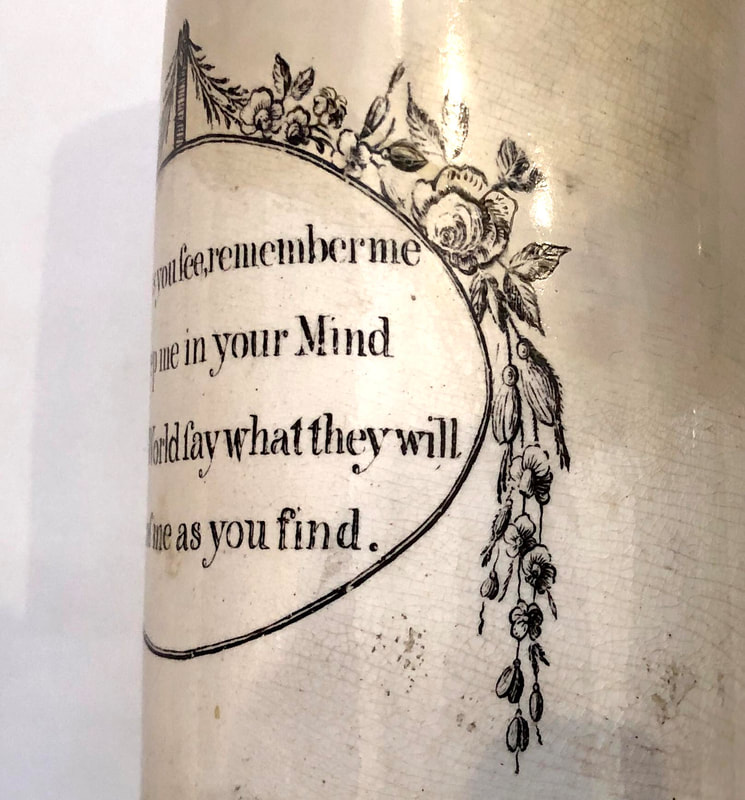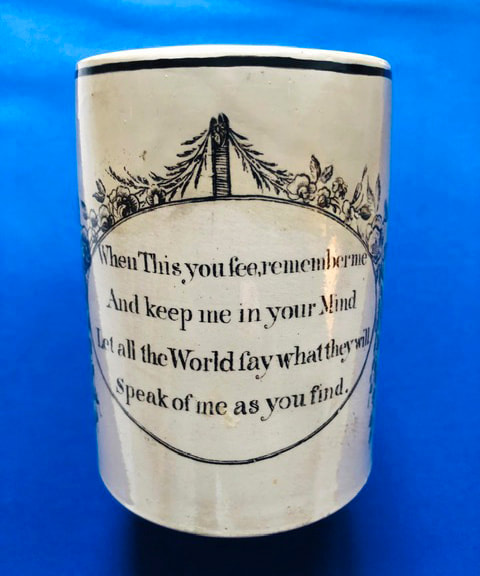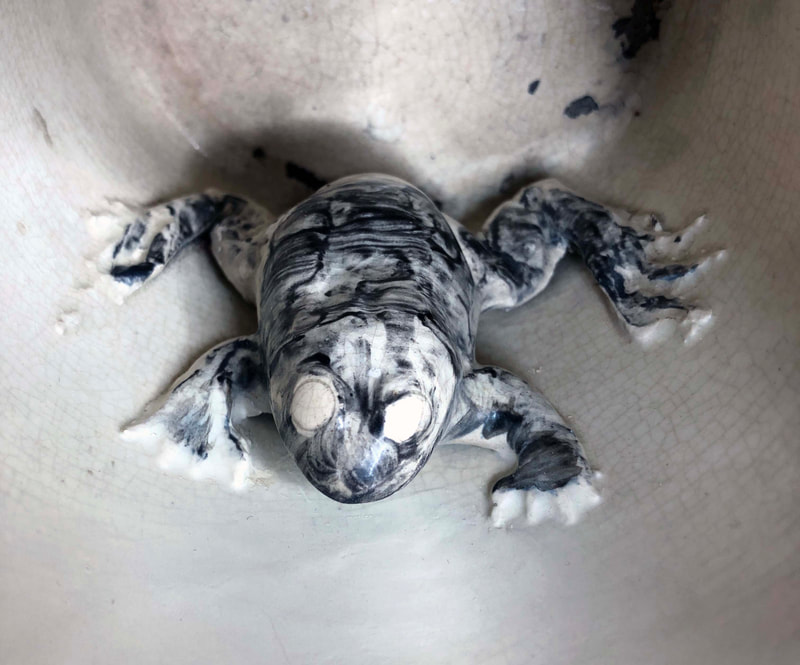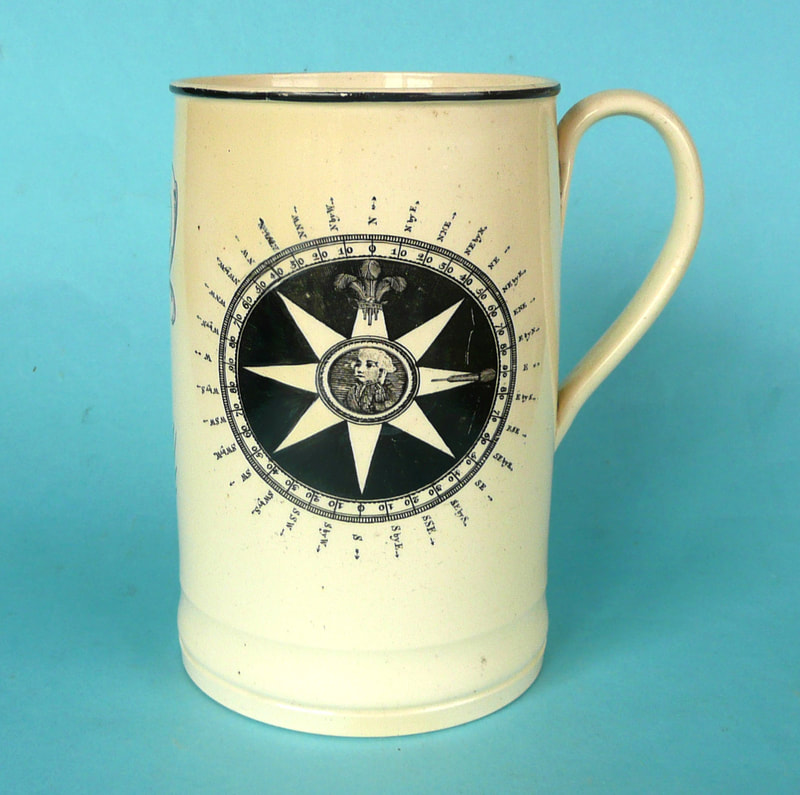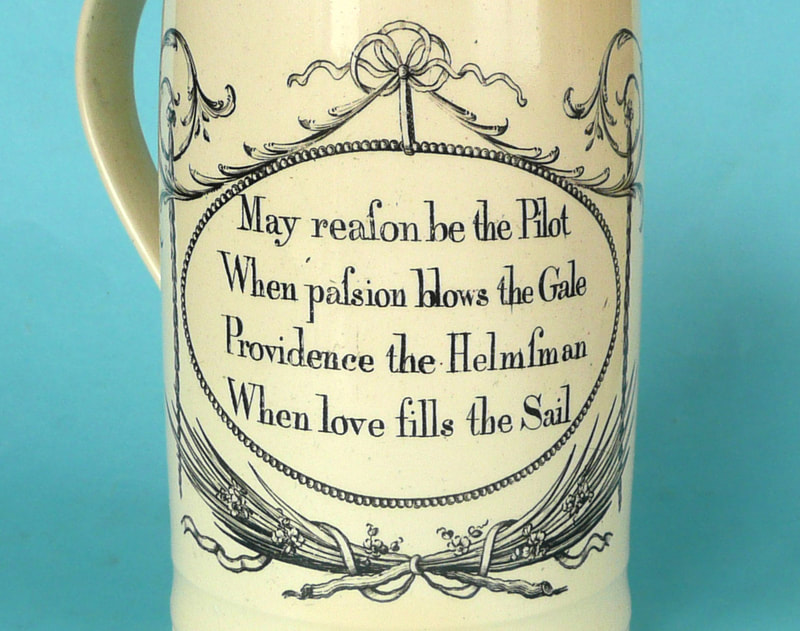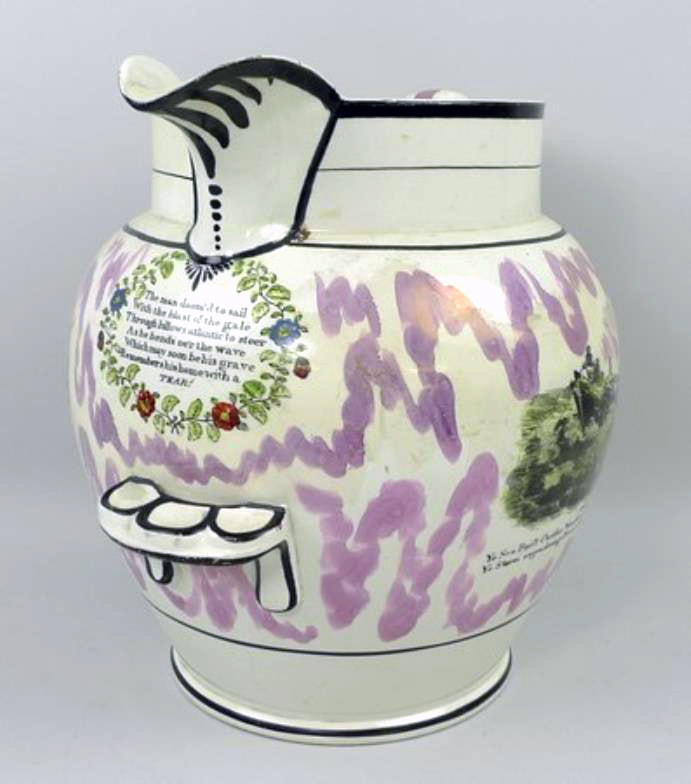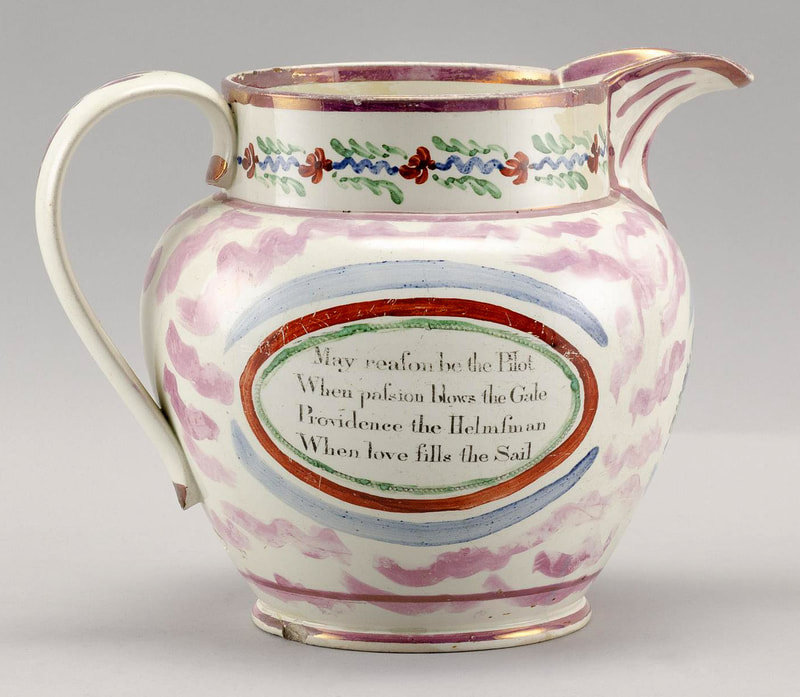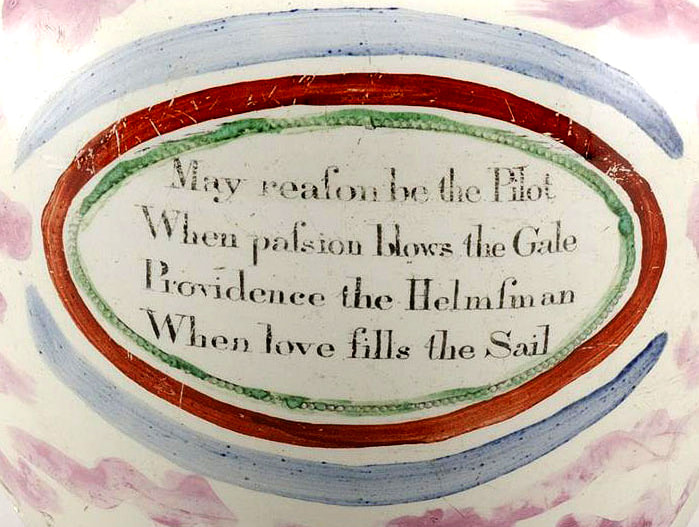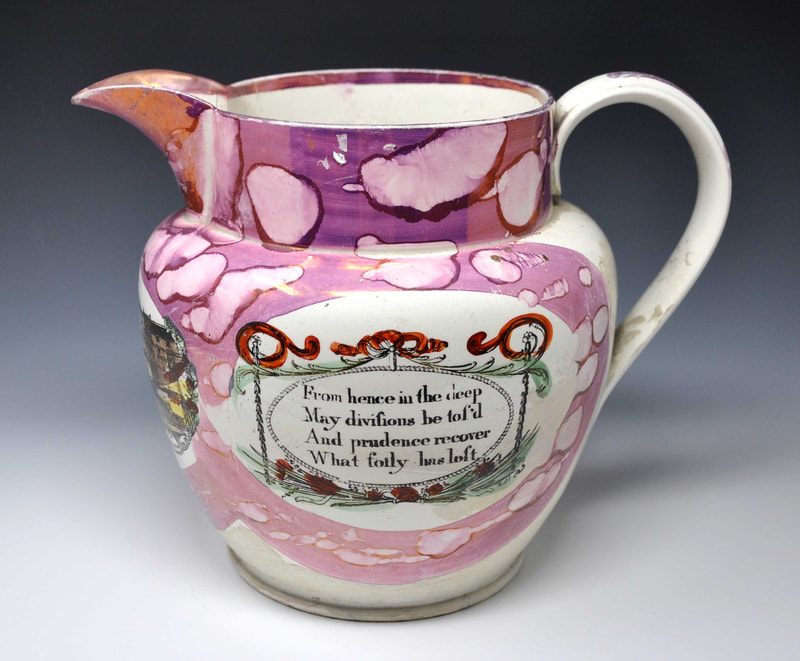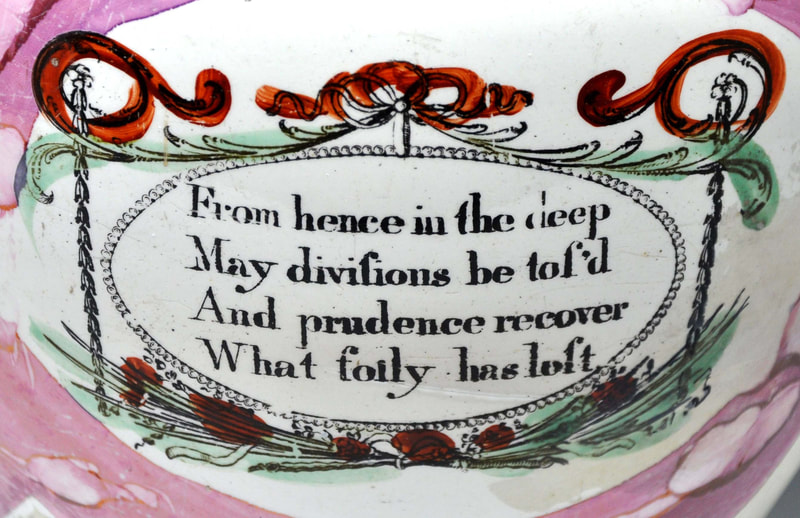Wares with printed marks for Warburton, Newcastle Upon Tyne
Bell's book on Tyneside Pottery records various Warburtons in the late 18th century, but no James Warburton, as on the Nelson jug below. According to Bell, the Warburton Place Pottery, Carr's Hill, Gateshead, was founded by John Warburton around 1740, and run by him until sometime before 1795 when it passed to Isaac Warburton, and then after that to Ellen Warburton. The factory closed in 1817.
In parallel, John Warburton ran a warehouse/shop at Quay Side to distribute his own items. In 1769, the Chronicle refers to John Warburton's 'Earthen Warehouse on the Quay', and in 1770, to him selling 'various sorts of Earthenware of his own manufacture'.
Bell further writes of a Joseph Warburton mentioned in the Journal in 1757, and of a Joseph mentioned in a directory of 1833 at Heworth Shore in Gateshead. Norman Lowe has identified a Joseph Warburton who married Mary Batty at St John’s Newcastle in 1797 but who does not appear in the 1841 census. Alternatively, they are referred to as Josiah Warburton and Margaret Batty in their son John's baptism record.
Norman has further identified a James Warburton born c1777, and in 1841, living in Clive Street Tynemouth where his occupation is given as china gilder. So this could be the James Warburton on the Nelson jug, who would have been 28 in 1805 when the jug was made (date of the Battle of Trafalgar). If so, by 1841 he was apparently living out his old age in somewhat straightened circumstances.
Another confusing factor is that Warburton transfer plates resurfaced in Southwick at both Scott's and Moore's potteries in the 1830s, and perhaps in North Shields also. So when the Warburton Place Pottery closed in 1817, someone (James?) must have retained a small number of copper plates and, about 15 or so years later, decided to sell them on.
If you have an item with a Warburton transfer, please get in touch using the link at the bottom of this page.
In parallel, John Warburton ran a warehouse/shop at Quay Side to distribute his own items. In 1769, the Chronicle refers to John Warburton's 'Earthen Warehouse on the Quay', and in 1770, to him selling 'various sorts of Earthenware of his own manufacture'.
Bell further writes of a Joseph Warburton mentioned in the Journal in 1757, and of a Joseph mentioned in a directory of 1833 at Heworth Shore in Gateshead. Norman Lowe has identified a Joseph Warburton who married Mary Batty at St John’s Newcastle in 1797 but who does not appear in the 1841 census. Alternatively, they are referred to as Josiah Warburton and Margaret Batty in their son John's baptism record.
Norman has further identified a James Warburton born c1777, and in 1841, living in Clive Street Tynemouth where his occupation is given as china gilder. So this could be the James Warburton on the Nelson jug, who would have been 28 in 1805 when the jug was made (date of the Battle of Trafalgar). If so, by 1841 he was apparently living out his old age in somewhat straightened circumstances.
Another confusing factor is that Warburton transfer plates resurfaced in Southwick at both Scott's and Moore's potteries in the 1830s, and perhaps in North Shields also. So when the Warburton Place Pottery closed in 1817, someone (James?) must have retained a small number of copper plates and, about 15 or so years later, decided to sell them on.
If you have an item with a Warburton transfer, please get in touch using the link at the bottom of this page.
J Warburton, Newcastle Upon Tyne
Bell says that items with the J Warburton printed mark were 'probably the work of John Warburton or Joseph Warburton'. We have a third contender, James.
Attributed to Scott & Sons, Southwick, c1830
The mug below has the Warburton bridge transfer, but has decorative features firmly attributable to Scott's Pottery in the 1830s.
James Warburton, Quay Side, Newcastle
Attributed to Scott & Sons, Southwick, c1830
The mug below shares the same transfer as the creamware jug, but has decoration similar to Scott's mugs in the 1830s.
J Warburton, Newcastle Upon Tyne
The mug above is from the Sunderland Museum & Winter Gardens, Tyne & Wear Archives & Museums collection.
Moore & Co, Wear Pottery
This late 1830s' to early 1840s' bowl, is from the Sunderland Museum & Winter Gardens, Tyne & Wear Archives & Museums collection. The ship transfer is from the same copper plate as that on the Warburton mug above.
Moore & Co, Wear Pottery
This jug has the verse from the Warburton mug above. It again has typical red, green and blue enamel decoration used by Moore's Pottery from the late 1830s into the 1840s
Moore & Co, Wear Pottery
A mug with a printed mark 'Warburton N C Tyne'. However, the inscription is typical of Moore's Wear Pottery in the 1830s. The 'Sailor's Farewell' transfer matches that on the bowl above.
Similar unmarked transfers
Attributed to Newcastle Pottery, Addison, Falconer & Co, c1800
In the absence of a printed mark, it is hard to attribute transfers of similar style to those above. This mug has a frog that appears on other items in conjunction with Newcastle Pottery marks. For that reason, I've attributed it to Addison, Falconer & Co. It appears that an engraver was supplying copper plates in very similar style to multiple Tyneside potteries.
Attributed to either J Warburton, Newcastle Upon Tyne or the Newcastle Pottery
This transfer, 'May reason be the pilot', is unmarked and has no frog, so cannot be attributed with any certainty.
Unidentified pottery
You can see from various dinks and scratches that the 'Pilot' transfer on the jug below is a trimmed down imprint from the same copper plate as the jug above. I suspect it was trimmed to make this old style of transfer appear more modern. Likewise, 'The Tear' transfer is apparently from the same copper plate with the addition of a small ship and the title 'SAILOR'S DOOM' at the top of the transfer on the jug below. I have previously attributed the jug below to North Shields, but 'The Life Boat of Sunderland' transfer on the jug above makes me less sure.
Cornfoot, Car & Co, Low Lights, North Shields
Below is a firmly attributable North Shields jug, from the 1830s, with a very similar style of transfer to those on this page.





